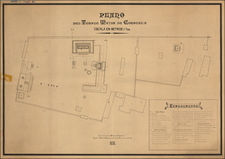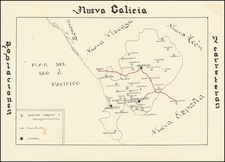Codex Vaticanus 3738
The Codex Vaticanus 3738, also known as the Codex Vaticanus B or the Vatican Codex, is a renowned Aztec codex held in the Vatican Library. Created before the Spanish conquest of Mexico, it is one of the few surviving pre-Columbian codices and is believed to have been produced in the early 16th century. The codex is an important source for understanding Aztec life, rituals, and society, containing rich illustrations and Nahuatl inscriptions that document various aspects of Aztec culture, including mythology, religious practices, ceremonies, and daily life. Its intricate and colorful illustrations offer a unique window into the pre-Hispanic era, making it an invaluable artifact for historians, anthropologists, and scholars interested in Mesoamerican civilizations.
Transcription
1. Deer or Stag. 2. Wind. 3. Rose. 4. Earthquake. 5. Eagle. 6. Eagle of a different species. 7. Water. 8. House. 9. Skull or Death. 10. Rain. 11. Dog. 12. Rabbit. 13. Flint. 14. Air. 15. Monkey. 16. Cane. 17. Grass or Herb. 18. Lizard. 19. Tiger. 20. Serpent.
These are the 20 Letters or Figures which the Mexicans used in all their calculations, which they supposed ruled over men as the figure shows, and they correct in a corresponding manner those who became ill or suffered pains in any part of the body.
*In a Missal (of the year 1498) entitled Heures à l'usage de Rome, is the figure of a man with the principal viscera exposed to view, from each of which, viz., the heart, the liver &c. a line drawn to the figures of the ruling constellation above. It would appear hence that Astrology in the 15th century had the sanction of Religion.
For Description See Aglio Vol. 6, page 223 or my MSS page 151. WHS.
William Henry Shippard's Mexican Paintings
William H. Shippard (1803-1865) was a pioneering 19th-century British museologist - an unsung progenitor of modern-day museum anthropology. While he is chiefly remembered as a friend of George Catlin, Shippard's profound interest in the ancient civilizations of Mexico connects him with a cohort of British contemporaries that include Lord Kingsborough and the showman William Bullock. Shippard's fascination with Mesoamerica propelled him to amass a significant collection of visual material derived from Aztec codices which he copied himself. A figure of some intrigue and scholarly ambition, Shippard endeavored to establish the Museum of Mankind in London, which seems to have evolved from his deep interest in early Mexican cultures. Although the museum did not come to fruition, Shippard's original artwork, mainly pen and ink drawings enriched with vibrant hand coloring, based on Mexican codices held in European libraries and collections, remains a valuable historical source, particularly for understanding the allure of Mexican antiquity within early 19th-century British collecting circles.
Capt. William H. Shippard, a friend of George Catlin and an avid watercolorist and museologist, was also a pioneering British Mesoamericanist. Shippard appears in British newspaper notices from the 1840s as a London-based lecturer who spoke about Native Americans and Mexican antiquities. We know he was a friend of George Catlin, and that he was involved in attempts to organize early London museum exhibitions of Mexican antiquities. In the latter efforts Shippard would seem to coincide with a group of like minded prominent English collectors interested in Mexican topics active during the 1820s and 1830s, including Lord Kingsborough and the bibliomaniac Sir Thomas Phillipps, among others. He seems to have been an armchair anthropologist and would-be museum founder, whose ambitious ideas for a London-based museum never got off the ground - at least not beyond the prospectus-printing stage. Certain aspects of Shippard's career are akin to William Bullock, the showman and connoisseur of Mexican antiquities who actually did travel to Mexico. Bullock published a notable book about his Mexican travels, and achieved a level of recognition in his day as the empresario of London's Egyptian Hall, wherein he thrilled large London audiences with his elaborate exhibitions of exotica, including Mexican items.










![(Mexican-Aztec Painting) [Watercolor of four Aztec deities from the Codex Telleriano Remensis and Codex Vaticanus]](https://storage.googleapis.com/raremaps/img/small/103011.jpg)
![(California and Mexico) [Album of 68 original photographs (including 42 panoramic views): a train wreck in California; San Francisco earthquake damage; Torreon; Aguascalientes; Mexico City and more]](https://storage.googleapis.com/raremaps/img/small/98220.jpg)

![Nouvelle Carte Du Mexique, Du Texas Et D'Une Partie Des Etats Limitrophes . . . 1840 [Proposed Railroads In Texas -- First Appearance of Arizona on a Printed Map]](https://storage.googleapis.com/raremaps/img/small/103480.jpg)
![[ Florida Indians ] Ceremonia a Saturioua in expeditionem adversus hostes profecturo, observatae. XI](https://storage.googleapis.com/raremaps/img/small/86474.jpg)